Volume 2, Issue 1
Displaying 1-12 of 12 articles from this issue
- |<
- <
- 1
- >
- >|
-
1961Volume 2Issue 1 Pages 1-2
Published: 1961
Released on J-STAGE: December 21, 2009
Download PDF (2876K) -
1961Volume 2Issue 1 Pages 3-18
Published: 1961
Released on J-STAGE: December 21, 2009
Download PDF (15474K) -
1961Volume 2Issue 1 Pages 19-23
Published: 1961
Released on J-STAGE: December 21, 2009
Download PDF (3667K) -
1961Volume 2Issue 1 Pages 24-32
Published: 1961
Released on J-STAGE: December 21, 2009
Download PDF (6092K) -
1961Volume 2Issue 1 Pages 33-37
Published: 1961
Released on J-STAGE: December 21, 2009
Download PDF (2515K) -
1961Volume 2Issue 1 Pages 38-41
Published: 1961
Released on J-STAGE: December 21, 2009
Download PDF (2602K) -
1961Volume 2Issue 1 Pages 42-44
Published: 1961
Released on J-STAGE: December 21, 2009
Download PDF (2023K) -
1961Volume 2Issue 1 Pages 45-49
Published: 1961
Released on J-STAGE: December 21, 2009
Download PDF (813K) -
1961Volume 2Issue 1 Pages 50-55
Published: 1961
Released on J-STAGE: December 21, 2009
Download PDF (3533K) -
1961Volume 2Issue 1 Pages 56-61
Published: 1961
Released on J-STAGE: December 21, 2009
Download PDF (919K) -
1961Volume 2Issue 1 Pages 62-65
Published: 1961
Released on J-STAGE: December 21, 2009
Download PDF (800K) -
1961Volume 2Issue 1 Pages 66-70
Published: 1961
Released on J-STAGE: December 21, 2009
Download PDF (1091K)
- |<
- <
- 1
- >
- >|
